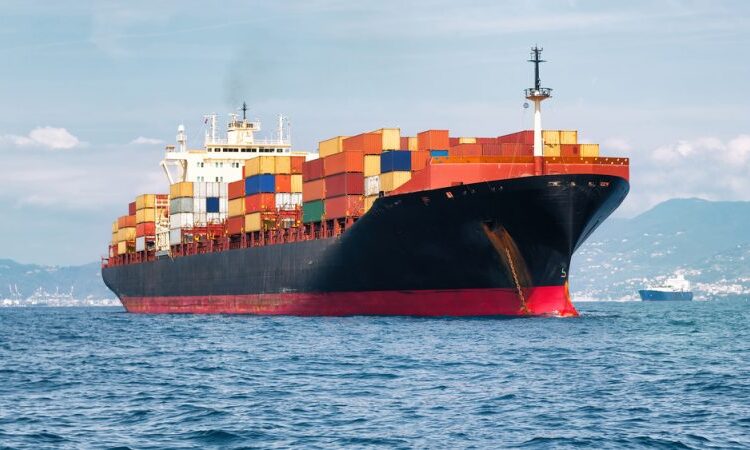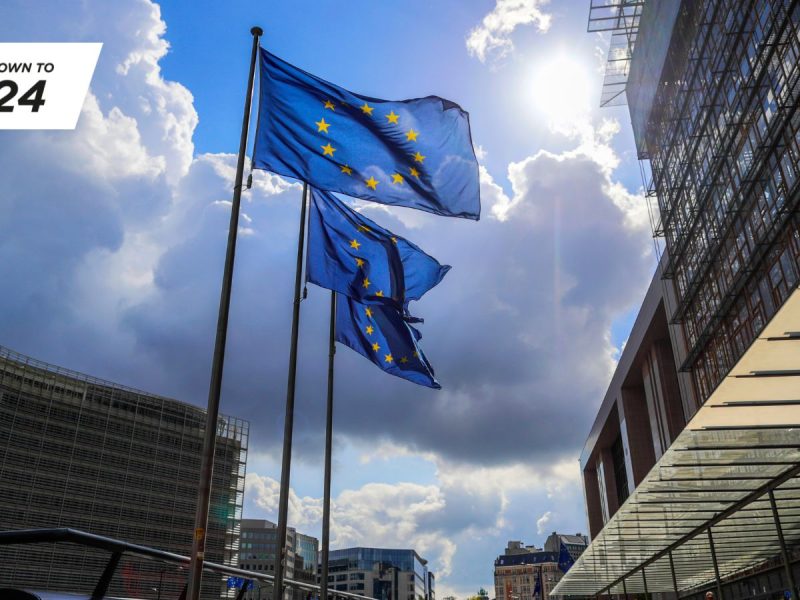
After a slow 2022, Germany, Italy and France are starting to see a major boost to their trade balance as energy prices are going down and imports from China dwindle.
In 2022 Europe witnessed a sharp decline in its trade with the rest of the world. In August of that year, the trade deficit of the eurozone reached €50.9 billion, the highest ever recorded, according to Eurostat.
However, one and a half years on from Russia’s full-scale invasion of Ukraine and the subsequent energy crisis, the slowdown seen in European foreign trade seems to be beginning to bounce back. The EU’s largest economies – Germany, France, and Italy – are all witnessing a recovery of their trade balance.
Italy managed to achieve a trade surplus with the rest of the world of €7.718 billion in June, compared with a €2.512 billion deficit in the same month of 2022, the Italian national statistics office ISTAT reported on Friday (11 August). Between May and June, exports increased by 0.4% and imports decreased by 3.3%.
Similar trends in Germany and France
A similar pattern can also be observed in Germany, where exports rose by 3.3% in the first half of 2023 compared to last year to €797.8 billion, the German Federal Statistics Office announced on Friday.
At the same time, imports declined sharply, by 4.3% compared to the first half of 2022. Germany’s trade surplus reached €98.7 billion in the first half of 2023, more than twice as high as in the first half of 2022.
The German trade balance was at one of its lowest-ever levels in the first half of 2022. The EU’s largest economy hit a trade deficit in May 2022 for the first time in 14 years, due to surging energy prices.
As for France, its current account deficit shrank by €29.7 billion in the past six months, from -€39.3 billion to -€9.6 billion, primarily due to a fall in energy prices after a volatile 2022 year, which has made goods importations cheaper.
Unlike Germany and Italy, France continues to face an overall trade deficit, though this is nonetheless shrinking. Imports of goods fell by 9.4% relative to the second half of 2022, while exports remained stable, with only a slight -0.8% fall. In money terms, the trade deficit was reduced from -€89 billion to -€54 billion.
China’s sluggish post-Covid economic recovery
This sudden boost in EU trade is not only explained by lower energy prices but also by China’s sluggish post-COVID economic recovery. China has been witnessing a sharp decline in exports in previous months, down 14.5%, according to customs authorities.
Accordingly, imports from China have declined for Europe’s largest economies, lowering their overall trade balance.
Between January and June 2023, Chinese exports to Germany declined by 16.8%, while German exports to China similarly declined by 8.4%. Likewise, imports to Italy declined by 19.9%, while exports to China increased by 45.6%.
French exports to China increased by 7.3% over the past semester, driven mainly by the aviation sector.
China’s export-driven economy is currently being hit hard by weaker global demand, alongside higher energy prices, high inflation and increased interest rates due to the war in Ukraine.
In spite of such positive results across the largest EU economies, French trade minister Olivier Becht sounded a cautionary note: “We remain prudent, and there is still a long road ahead […]”, he told journalists on Tuesday (8 July), warning that “such trends are subject to the whims of an international economic environment”.
[Edited by Nathalie Weatherald]










